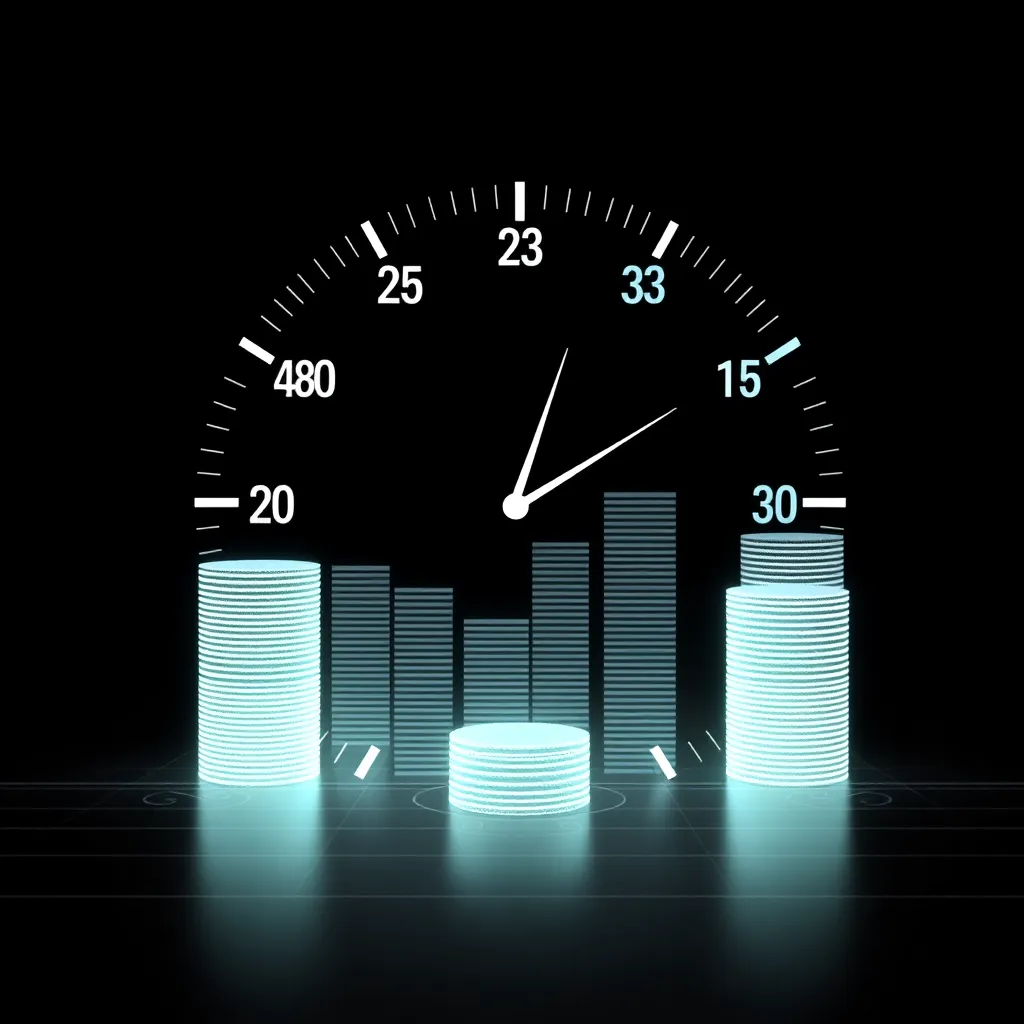Cryptocurrency trading has surged in popularity, drawing both novice and experienced traders into a highly volatile market. One of the most important decisions a trader must make is choosing the best time frame for their trades. This decision can significantly impact the outcome of your trading strategy, as the right time frame aligns with your trading style, risk tolerance, and market behavior.
In this article, Which is the Best Time Frame for Crypto Trading? the pros and cons of each, and provide you with the information needed to select the best time frame for your strategy. Whether you’re a day trader, swing trader, or long-term investor, this guide will help you make informed decisions and enhance your trading success.

What is a Time Frame in Crypto Trading?
A time frame, in the context of crypto trading, refers to the duration of time a trader uses to analyze a cryptocurrency’s price action before making a buy or sell decision. It can range from minutes to hours, days, weeks, or even months. The time frame you choose influences the strategy you employ and the frequency of trades. Crypto Tax Calculator
Time frames are crucial because they help traders analyze trends, identify entry and exit points, and understand the market’s movements. The most common time frames used by crypto traders include:
- Scalping (1-minute to 5-minute charts)
- Day trading (15-minute to 1-hour charts)
- Swing trading (4-hour to daily charts)
- Position trading (Weekly and monthly charts)
Let’s dive into each of these time frames and analyze them based on different trading strategies.
1. Scalping in Crypto Trading
Scalping involves making quick trades to capitalize on small price movements. It is a high-frequency trading strategy, where traders enter and exit positions multiple times throughout the day. The aim is to make a profit from very small price changes, typically over a very short period (seconds to minutes).
Best Time Frame for Scalping:
- 1-minute to 5-minute charts
Pros:
- High Frequency of Trades: Scalpers make multiple trades in a day, allowing for several profit opportunities.
- Quick Profits: Due to the rapid price changes in crypto markets, scalpers can make small but consistent profits.
- Less Exposure to Market Risks: Positions are held for a very short time, which minimizes exposure to market risks.
Cons:
- High Stress: The fast pace of scalping requires constant monitoring of the market, leading to high stress.
- Transaction Fees: Since you’re executing many trades, transaction fees can eat into profits.
- Requires Expertise: Scalping requires a solid understanding of market movements and technical indicators.
Ideal for:
- Traders who enjoy high-intensity trading and can dedicate time to monitor the markets constantly.
- Those with a high risk tolerance and the ability to make quick decisions.
2. Day Trading in Crypto
Day trading is a strategy where traders buy and sell assets within the same trading day. Unlike scalpers, day traders hold positions for a few minutes to several hours, capitalizing on intra-day price fluctuations. Crypto markets are highly volatile, providing day traders with plenty of opportunities to profit.
Best Time Frame for Day Trading:
- 15-minute to 1-hour charts
Pros:
- Opportunity to Profit in Both Bull and Bear Markets: Day traders can take advantage of both rising and falling markets.
- No Overnight Risk: Positions are closed by the end of the trading day, meaning no exposure to overnight price gaps.
- Flexible: Day trading can fit into various schedules, as trades can be made during the day without needing to watch the market constantly.
Cons:
- Time-Consuming: While not as intensive as scalping, day trading still requires a significant time commitment throughout the day.
- Risk of Overtrading: The fast pace may lead to impulsive decisions, increasing the risk of overtrading.
- Transaction Costs: Multiple trades in a single day can lead to high transaction fees, eating into profits.
Ideal for:
- Traders who have a few hours each day to monitor the market.
- Individuals who are skilled in technical analysis and can react quickly to price movements.
3. Swing Trading in Crypto
Swing trading aims to capture price swings or trends over several days to weeks. Swing traders often enter positions after a price pullback and aim to profit as the price moves in their favor. Unlike scalpers or day traders, swing traders take a longer-term approach but still capitalize on shorter-term price fluctuations.
Best Time Frame for Swing Trading:
- 4-hour to daily charts
Pros:
- Lower Stress: Unlike scalping, swing trading is less time-intensive and doesn’t require constant monitoring.
- Larger Profit Potential: Swing traders aim for bigger price movements, which can result in larger profits.
- Flexibility: Swing traders can adjust their positions based on market analysis without needing to monitor the markets all day.
Cons:
- Exposure to Overnight Risk: Swing traders may have to hold positions overnight, exposing them to potential risks from news or events.
- Slower Decision-Making: Swing trading requires patience, as it takes time for the market to move in the desired direction.
Ideal for:
- Traders who cannot be glued to their screens all day but still want to trade actively.
- Individuals with a good understanding of technical analysis and market trends.
4. Position Trading in Crypto
Position trading is a long-term strategy where traders hold positions for weeks, months, or even years. This type of trading is more suited to long-term investors who believe in the fundamental growth of a cryptocurrency. Position traders often rely on macroeconomic factors, news, and major trends.
Best Time Frame for Position Trading:
- Weekly and monthly charts
Pros:
- Long-Term Profit Potential: Position traders can benefit from long-term price trends and avoid short-term market volatility.
- Less Stress: Since position traders don’t need to constantly monitor the market, it is a low-stress approach.
- Reduced Transaction Costs: Fewer trades result in lower transaction fees.
Cons:
- High Exposure to Market Events: Holding positions for a long time exposes traders to significant price fluctuations and market news.
- Slow Returns: Unlike day trading or scalping, position trading offers slow returns, requiring patience and commitment.
- Capital Tied Up: Traders must be willing to tie up their capital for a long period, which may not suit everyone.
Ideal for:
- Traders or investors who believe in the long-term success of a cryptocurrency.
- Individuals who can tolerate market volatility and want to minimize the time spent actively trading.

How to Choose the Best Time Frame for Crypto Trading?
Choosing the right time frame depends on several factors, including your trading style, risk tolerance, and availability to monitor the markets. Here’s a quick guide on how to select the best time frame:
- Consider Your Availability:
- If you can dedicate several hours a day to monitor the market, day trading may be suitable.
- If you can only trade for a few minutes or don’t have much time to watch the market, scalping may be more appropriate.
- Understand Your Risk Tolerance:
- If you prefer a fast-paced, high-risk environment, scalping and day trading may appeal to you.
- If you are risk-averse and prefer long-term investments with less stress, position trading would be better.
- Consider Your Experience:
- Beginners may find swing trading or position trading easier to manage as it’s less time-consuming and stressful.
- Experienced traders may prefer scalping or day trading to take advantage of frequent price movements.
- Analyze the Market’s Volatility:
- Crypto markets are highly volatile, and some strategies work better during certain market conditions. Scalpers and day traders thrive on volatility, while position traders may focus on fundamental trends.
Conclusion
The best time frame for crypto trading ultimately depends on your individual trading goals, style, and risk tolerance. Each time frame offers unique benefits and challenges. Whether you’re a scalper looking to profit from small price changes or a position trader holding assets for the long-term, understanding the pros and cons of each time frame will allow you to make informed decisions and create a trading strategy that suits your needs. Crypto Profit Calculator
By selecting the right time frame, you can optimize your trading performance, manage risk effectively, and capitalize on the opportunities presented by the dynamic world of cryptocurrency trading.


